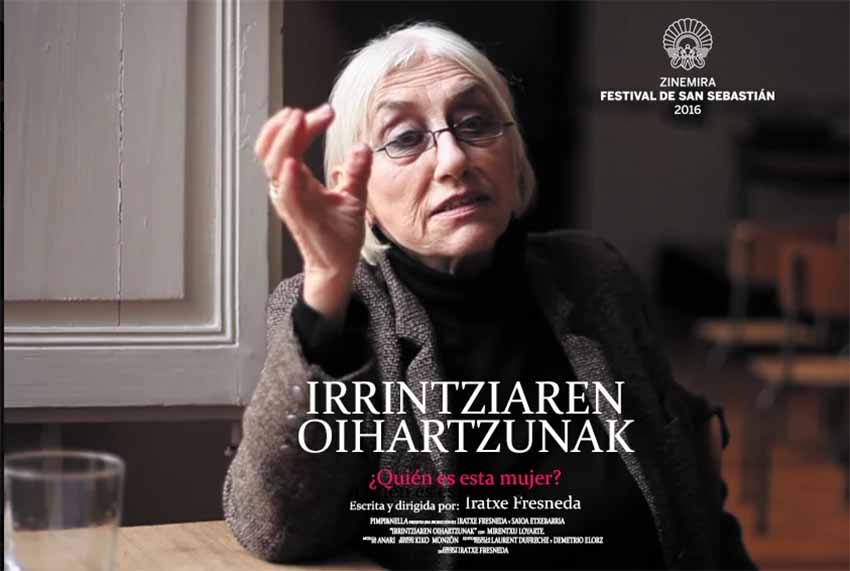Nantes, France. According to the Basque Film Library, La Fenêtre Basque (Basque Window), section sponsored by the Etxepare Basque Institute in close collaboration with the Filmoteca Vasca, 11 feature-length films and 8 shorts, in addition to five more Basque feature-length films, will be shown in the festival. Created in 2001, this section is already entrenched in Nante, and now occupies a prominent place in the programming that annually gathers more than 26,000 spectators. Year after year, the Basque Window provides a large part of the best current Basque production, in general, works by the most prominent Basque filmmakers. This is the oldest film festival outside of the Basque Country and a platform that is aimed to reach the French-speaking public, as well as French critics and film industry.
This edition of the festival will be covered from beginning to end by Basque film makers, the inauguration at the Nante Opera will star Daniel Calparsoro with his recent success Cien años de perdon (2016). Calparsoro will return and also attend the closing ceremony as Kalebegiak (2016), a collective film from Donostia to close the festival.
The Basque Window includes the following films:
11 feature-length films of fiction and documentaries
-Chillida, esku huts (2016), Juan Barrero
-El fin de ETA (2016)*, Justin Webster
-Gernika (2016), Koldo Serra
-Gernika. Markak (2016), Hannot Mintegia
-Cien años de perdón (2016), Daniel Calparsoro
-Irrintziaren oihartzunak (Echos of an Irrintzi) (2016), Iratxe Fresneda
-Nueva York. Quinta Planta (2016)*, Mikel Rueda
-Psiconautas, los niños olividados (2016)*, Pedro Rivero y Alberto Vázquez
-Sipo phantasma (2016)*, Koldo Almandoz
-El último verano (2016)*, Leire Apellaniz
-Kalebegiak (2016)
8 short films
-Caminan (2016), Mikel Rueda
-Decorado (2016)*, Alberto Vazquez
-Guernika (1937), Nemesio Sobrevila
-Hileta (2016)*, Kepa Sojo
-Ikuska 12 (1981), Mirentxu Loyarte
-Ikuska 2 (1979), Pedro Olea
-Irrintzi (1978), Mirentxu Loyarte
-Renovable (2016), Jose Mari Goenaga y Jon Garaño
(*Films presented in the competition)
Nine films in competitive sections
Basque talent will also be present in some of the competitive sections of the festival. A total of nine films (six feature-length and three sorts) are vying for an award this year. In the official section, Demonios tus ojos (2017) by Pedro Aguilera from Donostia will be one of the eight feature-length films in the contest. Vying for the best documentary will be El fin de ETA by Justin Webster (2016), Nueva York Quinta Planta by Mikel Rueda (2016) and El ultimo Verano (2016), by Leire Appellaniz. In the Opera Prima section another two Basque films will compete: Psiconautas, los niños olvidados (2016) by Pedro Rivero and Alberto Vazquez, winner of a Goya as the best animated film and Sipo phantasma (2016), by Koldo Almandoz.
In the same way, thanks to Kimuak, a platform at the Etxepare Basque Institute and the Filmoteca Vasca to support the best Basque shorts of the year, Hileta (2016), by Kepa Sojo and Renovable (2016), by Jon Garaño and Jose Mari Goenaga and Decorado (20160 BY Alberto Vazquez, will compete for the best short that is decided by popular vote.
Remembering Gernika
In addition, this year the Nantes Festival will also look back 80 years at the anniversary of the bombing of Gernika during the Spanish Civil War with a selection of six films with the support of the Basque Film Library to include two exhibits and a roundtable.
In this series two contemporary Civil War films will be shown: Guernika (1937), by Nemesio Sobrevila and Frente de Vizcaya and 18 de julio, 1937 by Miguel Pereyra. Two propaganda films that provide ctwo opposite visions of the war in the Basque Country.
These will be joined by Guernica (1950) by French filmmaker, Alain Resnais; a short Ikuska 2 (1979), where Pedro Olea gathers testimonies of survivors of the bombing, and the documentary Gernika Markak (2016) by Hannot Mintegia inspired by the book of the same name by Bernardo Atxaga; and the feature-length film Gernika (2016) by Koldo Serra. A roundtable moderated by the director of the Basque Film Library, Joxean Fernandez, will look for connections between past and present through film and art in general.
In the same way, the exhibit “From Goya to Guernica, Spain 1936-1939, the Disasters of War” that includes 50 documents, posters and period newspapers, and the work “Alepponnica” by Portuguese illustrator Vasco Gargalo, a Syrian version of Picasso’s Guernica.
To conclude with the presence of Basque filmmakers Enrique Urbizu from Bilbao with Caja 507 (2002) and No Habra paz para los malvados (2011) heading the list of masters of dark cinema and tributes at this year’s festival. Calparsoro and Cien años de perdon (2016) will also be shown in this section, and Urbizu will participate in a debate about this genre and will also interview the director of the festival, Pilar Martinez Vasseur. These films will also be shown in other sections of the festival: La ardilla roja (1993), by Julio Medem, and A escondidas (2014), by Mikel Rueda and Bajo las estrellas (2007) by Navarrese Felix Viscarret.
Besides the aforementioned, Urbizu and Calparsoro, filmmakers Juan Barrero, Hannot Mintegia, Mikel Rueda, Koldo Serra, Koldo Almandoz, Leire Apellaniz and Iratxe Fresneda will attend the festival.
Institutional Presence
Among Basque institutional representatives in attendance it is worth mentioning the Basque Government’s Vice-Minister of Culture, Youth and Sports, Joxean Muñoz who will address the gathering at the festival inauguration at the Nantes Opera, as well as Miren Arzalluz, Director of the Etxepare Basque Institute, and Pablo Berastegui, Director of Donostia 2016, at the closing and award ceremonies.
To conclude, Juan G. Andres, journalist and photographer for Noticias de Gipuzkoa as well as filmmaker Pablo Iraburu who won the same prize last year with his film Walls (2015) will be part of the jury for best Documentary.






 Send to a friend
Send to a friend Add comment
Add comment








